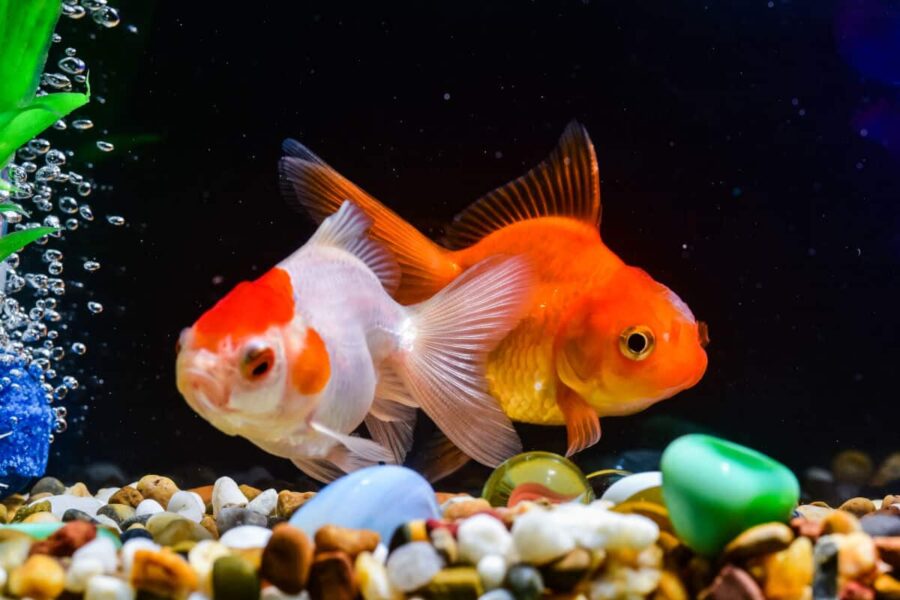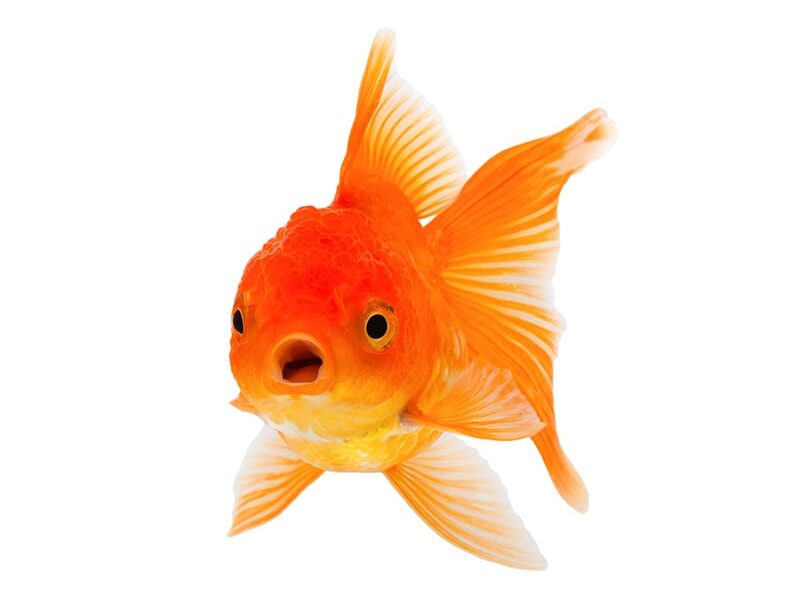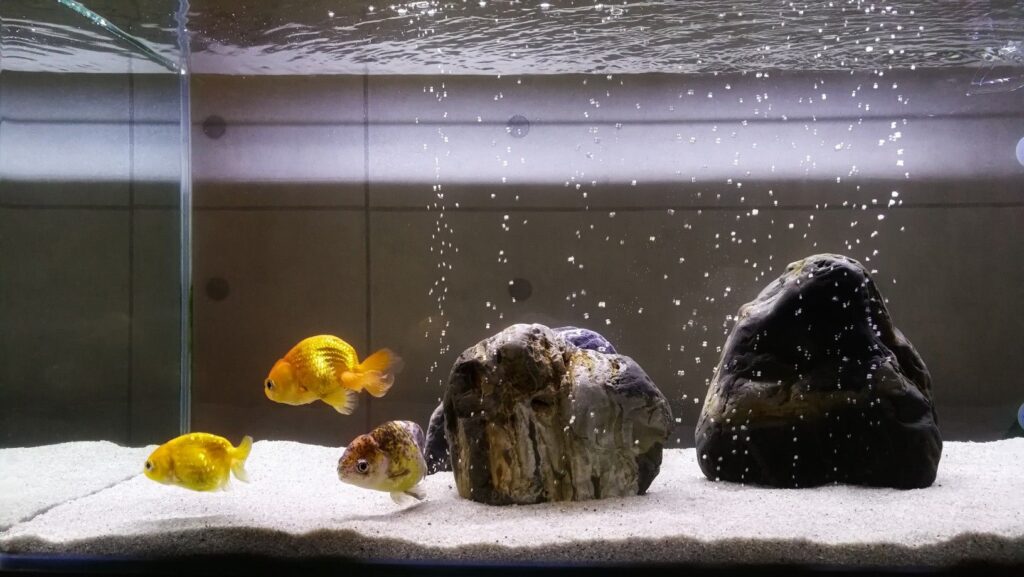
Hello there, budding aquarists! Get ready to dive into the rewarding world of creating the ideal goldfish tank for beginners. Picture this: a stunning underwater haven, your very own mini Atlantis, right in your living room.
But don’t fret! You’re not expected to master the trident just yet. We’re here to guide you, step-by-step, from selecting your first flashy finned friend to setting up a goldfish home that even the most discerning of snails would admire. So, strap on those diving goggles and let’s embark on this exciting aquatic journey. Remember, every great adventure starts with a single fin-flap! 🐠🌊
Identifying the Types of Goldfish
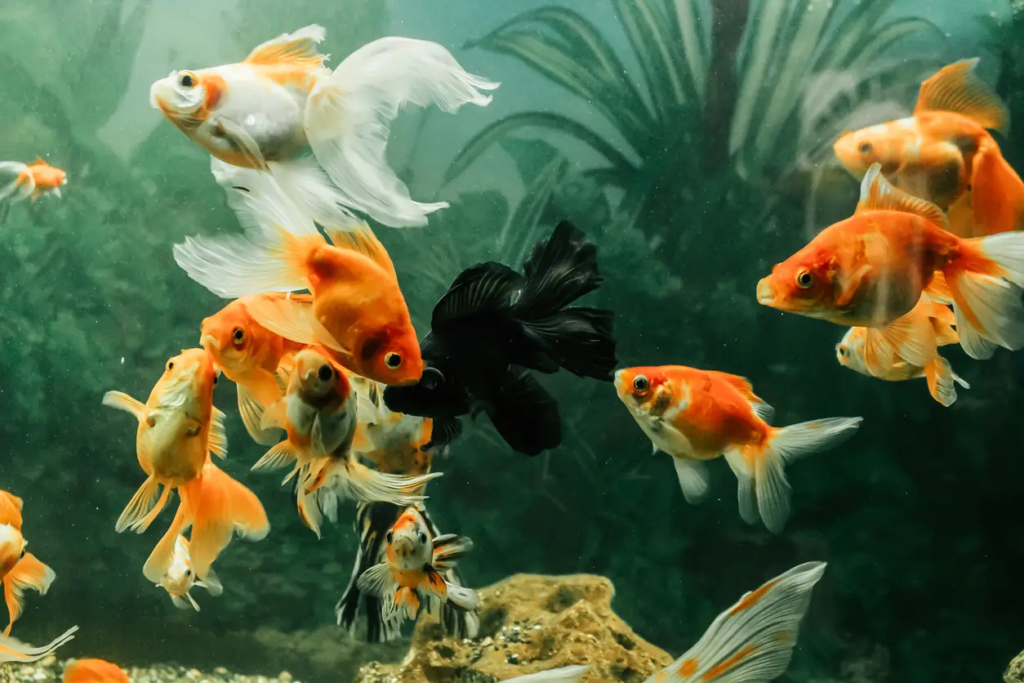
Congrats on diving into the world of goldfish keeping! First order of business: let’s recognize what we’re dealing with. In this section, we’ll uncover the secret lives of goldfish and their little quirks.
Characteristics of Goldfish
Goldfish aren’t your average pet fish. They’re social and lively, and they definitely enjoy the company. Known for their lustrous scales and elegant fins, their beauty is hard to miss. Not to mention, their memory span extends beyond that 3-second myth! Quite impressive, huh?
Variety of Goldfish Breeds
Did you know there are more than 20 different breeds of goldfish? Yes, the family is big! Some popular breeds include the Comet, Fantail, Oranda, and Ranchu. They each have their unique traits and distinct appearances. Kinda like us humans, don’t you think ?
Choosing the Right Breed for Beginners
As a beginner, it’s essential to start with something manageable. The hardy Comet goldfish could be your best bet. They can adjust to varying water conditions and have fewer health issues. Think of it as the ‘training wheels’ of goldfish ownership.
Now that we’ve swam through the basics about our golden buddies, it’s time to find them a home. In the next section, we’ll discuss why the size of their tank matters. Trust me, it’s not just a ‘bigger is better’ thing!
Why Tank Size Matters?
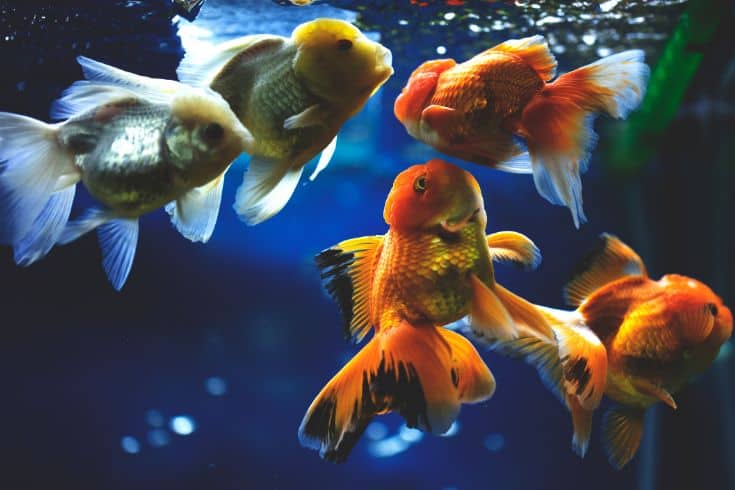
Imagine squeezing yourself into a closet for the rest of your life. Sounds tough, right? Goldfish feel the same way in tiny, cramped tanks.
The Importance of Space for Goldfish
Goldfish are a boisterous, energetic bunch, known for their enthusiastic swimming. They need room to flap those pretty fins! Ample tank space not only ensures their physical well-being but also their mental health.
There’s no denying, a large tank can positively impact your goldfish’s mood. Now that you understand their need for space, let’s talk tank sizes.
Recommended Tank Size
“Fancy” goldfish require a minimum of 20-30 gallons for the first fish, with an extra 10 gallons for each added buddy. Picture it as their own “fishy” penthouse. Regular goldfish, on the other hand, need a whopping 55 gallons initially, with 12 extra gallons for every new family member.
Also, goldfish are notorious for producing a lot of waste. A larger tank can dilute the waste and reduce the toxic buildup. Up next, we’ll address why keeping goldfish in small bowls is a big no-no.
Why Small Bowls are Harmful?
Pet store often portray goldfish in small, spherical bowls, which, frankly, is akin to promoting animal cruelty. Goldfish in cramped settings are more prone to stress, disease, and shorter lifespans. Furthermore, inadequate space can also lead to underdeveloped fish and stunted growth.
Hopefully, these reasons prompt you to reconsider the tiny fishbowl idea. Up next, we will guide you on choosing the right tank equipment that’ll turn your tank into a fishy paradise.
Choosing the Right Tank Equipment

We have walked down the path of understanding goldfish types and tank sizes. Now, let’s plunge into the fascinating world of tank equipment. The proper gear can make a world of difference for our finned friends.
Essential Tank Equipment
Looking at a well-equipped fish tank can be a bit daunting for beginners. You see a heater, a filter, lighting, and an air pump. But don’t fret, it’s easier than it appears. Each equipment piece has a specific role. The heater maintains the temperature, the filter keeps the water clean, the lighting sets a calming environment, and the air pump supplies oxygen. Now, isn’t that simple!
Choosing a Good Water Filter
When it comes to filters, we have many options. But what’s the best for Goldie? Well, it should be a filter that can handle both mechanical and biological filtration. But remember, goldfish produce a lot of waste. We are not joking, they’re like tiny underwater trash factories. Therefore, the filter should be powerful enough to clean up after them.
Temperature Control Requirements
You might think, ‘Goldfish are cold-water animals, so no need for a heater, right?’ Wrong! Goldfish survive in a range of temperatures. It doesn’t mean they love freezing their fins off though. A steady temperature is vital as rapid changes can stress them out. Think of it as a thermostat, keeping conditions steady and comfortable.
Now that our tank has the right equipment, it’s easy to think we’re all set. But wait, a fish tank without decoration is like a playground without swings. So, buckle up, as we dive into decorating a gorgeous home for your glistening golden guests in the next section!
Decorating Your Goldfish Tank

So, you’ve got your goldfish and their fancy new home. It’s as empty as a bachelor pad. What now? It’s time to get crafty!
Choosing Safe Decorations
Just label this as “Interior Design 101 for Goldfish”. Be selective when picking decor. Go for non-sharp, smooth items. Forget that cutesy castle with the jagged towers – no one wants a scratched fish. And those vibrant, small pebbles? Kiss them goodbye – goldfish are notorious for choking on them.
Keeping Goldfish Stimulation in Mind
Even though goldfish won’t be able to Netflix and chill, they require mental stimulation too. Recreate their natural setting using a variety of plants, hiding spots, and visuals. But keep in mind – goldfish love to dig. Do your research about which plants can handle their intense gardening passion.
How to Set Up Aquatic Plants
Setting up plants can seem like getting your hands dirty in the lovely art of gardening… underwater. It’s not just about plopping the plants in the substrate. Different plants might have different requirements. So, take time to know about the specific plant types and how to care for them in your fish tank.
That’s right, you’re now a goldfish interior designer and a gardener. Feels cool, huh? However, just dumping the decorations in the tank isn’t enough. Next, we will dive into maintaining the right water quality. (Spoiler: it’s more than just plain tap water.)
Maintaining Water Quality
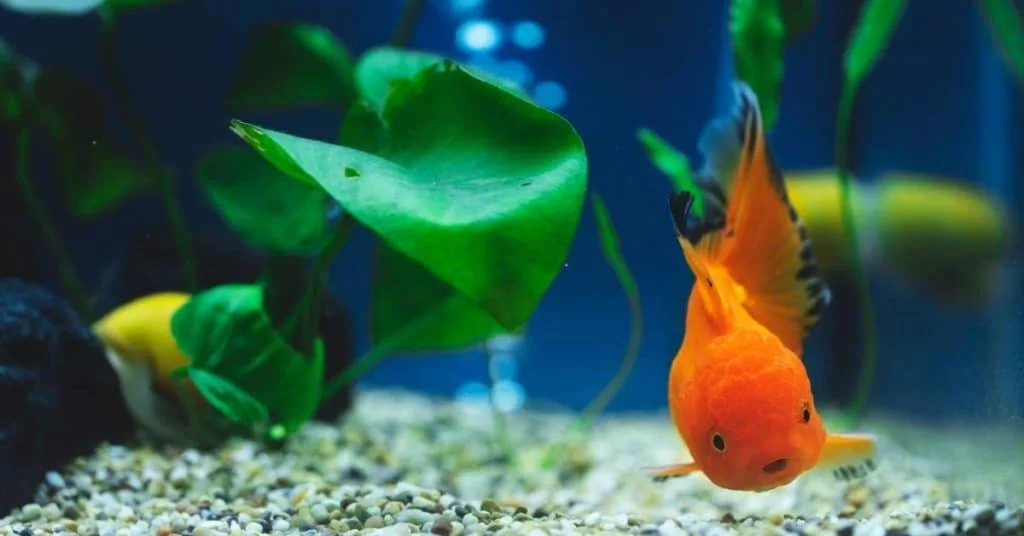
Your goldfish’s life may seem like a bowl of (wet) cherries, but you, as the super responsible pet parent, have a lot going on behind the scenes. You are the master of the mini underwater realm, complete with understanding its complex, fascinating water chemistry.
Understanding Water Chemistry
Water isn’t just H2O when it comes to your goldfish tank. There’s a whole lot more at play. First off, let’s talk about nitrates, nitrites, and ammonia. They are the infamous trio that gets produced by fish waste and uneaten food. Charming, right? You don’t want these to build up, because, well, it’s bad news for your goldfish.
How to Check pH Levels
On to pH levels now. Did you know that the pH scale ranges from 0 to 14? And that 7 is neutral? The ideal water pH for goldfish is slightly basic, around 7.2 and 7.6. Too far off in either direction and your goldfish won’t feel good. To check this, you just need a home testing kit. It’s like a pregnancy test but for your goldfish tank’s water. You just dip, wait, and see the colors change!
Preventing and Treating Common Water Problems
Now we don’t want to scare you, but water problems are somewhat like getting cavities — it’s best to prevent rather than deal with later. Regular tank cleaning and quality food can help keep nitrites and ammonia at bay. If you start to see trouble, things like water changes, conditioning products, or adding good bacteria can be your trusty sidekicks. Also, never hesitate to consult with a pet professional. After all, we’re all in it to start a goldfish revolution, right?
Alright, so now that you’re a rising star in maintaining water quality, what’s next on the goldfish parent checklist, you ask? Well, it’s time to dive into the glamorous world of goldfish cuisine! So, wipe off that testing kit and prep your apron, because we are about to talk goldfish feeding guidelines!
Goldfish Feeding Guidelines
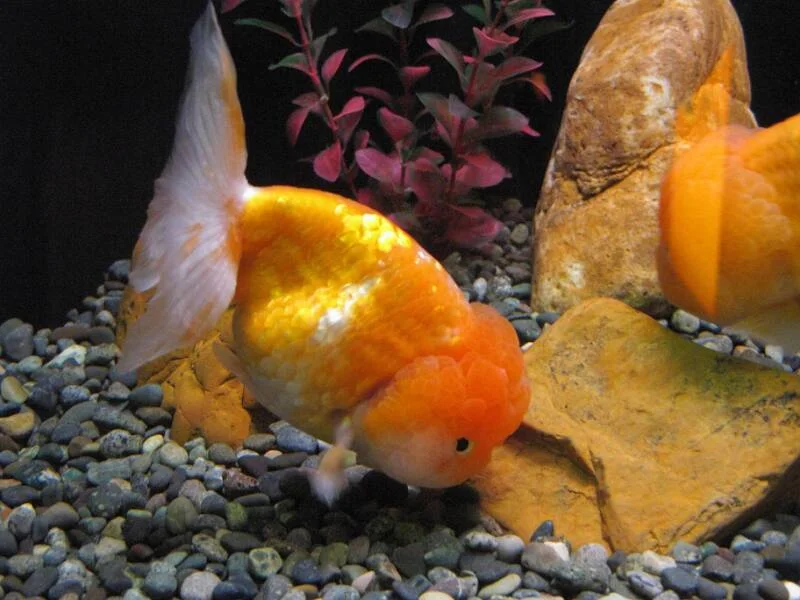
Let’s delve into a topic that’s often taken lightly but can make or break your goldfish’s health – their diet.
What to Feed Your Goldfish?
Goldfish are omnivores. That means they munch on plants and fish-friendly meats too. Prepared foods like flakes, pellets are an excellent choice. They are nutritionally balanced. But the menu shouldn’t end there. Treat them now and then with fresh greens, shrimp, or bloodworms. They’ll love the variety and it keeps them healthier too.
Let’s move onto how often to feed these swimming beauties.
How Often to Feed?
How frequently to feed your goldfish depends on their age. Baby goldfish, or rather, juveniles should be fed a few times a day. Adult goldfish, though, are content with a meal once or twice a day. Adding food slowly lets you monitor their intake. Plus, it prevents food leftovers from spoiling the water.
But what happens if you go overboard or go slack with the feeding, you ask?
Avoiding Overfeeding and Underfeeding
Overfeeding is like dropping an algae bomb in the tank. It creates waste and leads to poor water quality. And underfeeding? Well, it’s equal to signing a hunger pact! It leads to slower growth and weakens the immune system. Find a balance. Also, look for changes in your goldfish’s behavior. It’s a sign that your feeding regime may need some tweaks.
Wrap Up
Identifying the right breed for starting a goldfish hobby, considering tank size, choosing the right equipment, and understanding water chemistry is crucial for raising a healthy goldfish. Beginners especially, should spend time on understanding these fundamentals. Additionally, feeding your goldfish the right amount and frequently enough is equally important.
Goldfish tank decoration shouldn’t be overlooked as it forms part of their environment. Aquatic plants, when set up right, offer stimulation and safety. Lastly, knowing how to check pH levels and prevent common water problems ensures your goldfish exist in their preferred water conditions. The goldfish world may seem vast but armed with these key points, traversing it becomes simple and enjoyable.
Frequently Asked Questions (FAQ)
Question: What are the best types of goldfish for beginners?
Answer: The best types of goldfish for beginners are the fantail goldfish and the comet goldfish due to their hardiness and adaptability.
Question: How big should my tank be for a goldfish?
Answer: The recommended minimum tank size for an adult goldfish is 20 to 30 gallons. However, some breeds require more space.
Question: Why shouldn’t I keep my goldfish in a small bowl?
Answer: Keeping a goldfish in a small bowl can harm its health. Goldfish produce a lot of waste and need a proper filtration system to keep their water clean, which a small bowl cannot provide.
Question: What equipment do I need for a goldfish tank?
Answer: Essentials include a tank, a filtration system, a heater, a gravel substrate, and decorations that are safe for your goldfish.
Question: How should I decorate my goldfish tank?
Answer: Decorations should provide hiding places and stimulation for your goldfish. Incorporate plants and ornaments that are safe for your goldfish.
Question: How can I maintain good water quality in my goldfish tank?
Answer: Regularly test the water’s pH and other parameters, perform regular water changes, and ensure your filtration system is working properly.
Question: What should I feed my goldfish?
Answer: Feed your goldfish a balanced diet of goldfish-specific flakes or pellets, along with occasional treats like live or frozen food.
Question: How often should I feed my goldfish?
Answer: Feed your goldfish 1-2 times a day, giving them only as much food as they can eat in 1-2 minutes.
Question: What happens if I overfeed or underfeed my goldfish?
Answer: Overfeeding can pollute the water and lead to health problems, while underfeeding can stunt growth and weaken the goldfish’s immune system.

